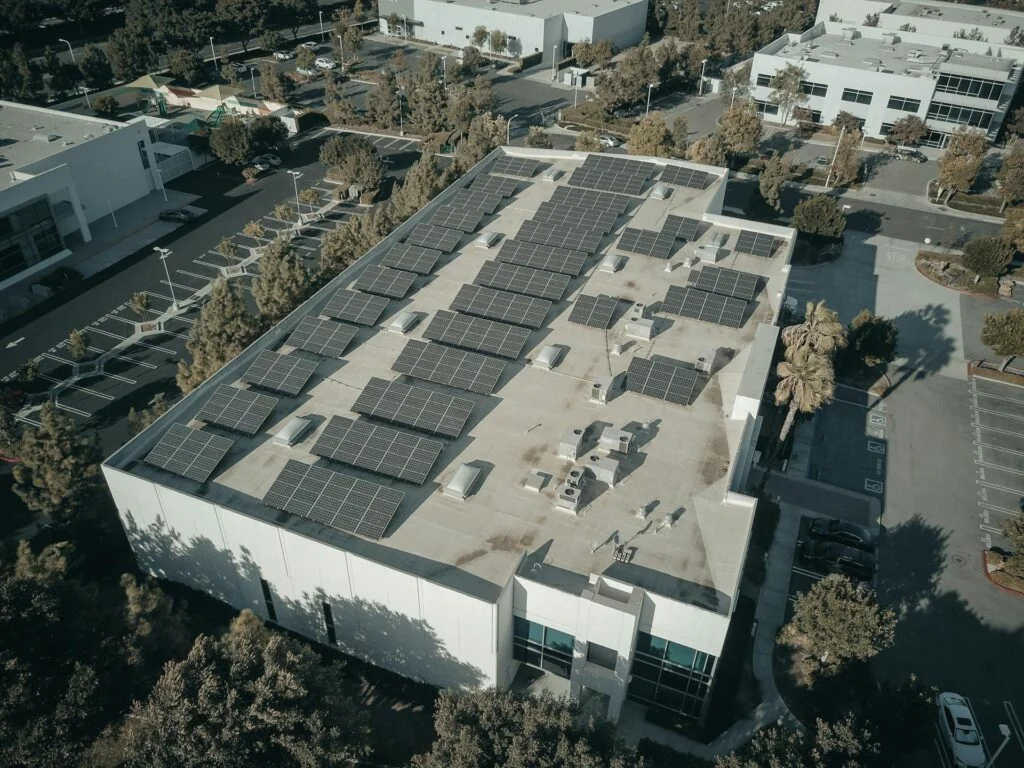Solar-Powered Factories: How Sustainable Production Is Becoming Reality
April 13, 2025

As more companies push to reduce their carbon footprints, solar-powered factories are becoming important in sustainable manufacturing. These factories use advanced solar panel technologies to generate electricity, either as their main power or as a supplemental energy source. By choosing renewable energy, these companies reduce their dependence on fossil fuels, decrease operating costs, and focus on carbon footprint reduction.
Approximately half of the world’s leading tech giants, such as Apple, Google, Meta, and Microsoft, are fully powered by renewable energy. To stay competitive, businesses must look for ways to cut carbon emissions.
Benefits of Solar-Powered Factories
Approximately one-third of all greenhouse gas emissions come from burning fossil fuels to power industrial buildings and manufacturing equipment. Because solar is a clean and renewable source, factories make a positive impact by switching.
Saving Money and Reducing Costs
Many manufacturing companies have large flat roofs ideal for commercial solar panels. A solar factory generates income by selling power back to the grid. Although the initial cost of installation may seem high, the long-term return on the investment is worthwhile. Over the lifespan of a solar panel system, companies can save tens to hundreds of thousands of dollars in energy cost savings.
Staying Competitive in the Market
Going solar is a smart move for manufacturers. Studies have shown that stakeholders and consumers prefer products made from eco-conscious companies. In fact, 78% of consumers agree they would pay more for products from companies that care about the environment. By choosing green manufacturing practices, companies boost their brand reputations and open new market opportunities.
Technological Innovations and Solutions
Over the past several years, there have been several advancements in solar panel technology. These advancements have increased solar cell efficiency and made sustainable energy more accessible than ever. Some advancements include:
- Photovoltaic Technology (PV) – PV systems convert sunlight directly into electricity using semiconductors. Because of the way they are manufactured, PV systems can be customized to meet almost any organization’s energy needs.
- Energy Storage Solutions – Solar systems use batteries to store excess solar energy for use at night and during cloudy days. SMA released a large-scale battery inverter for solar storage.
- Smart Energy Management Systems – Solar systems use AI-driven tools to optimize energy use. AI tools can also help companies identify and cut waste and boost their energy efficiency.
- Floating Solar Farms – Factories located near bodies of water can benefit from floating solar farms. Panels are installed on the surface of the water to save land space and experience cooling benefits.
- Concentrating Solar Power Technology (CSP) – CSP uses mirrors to draw sunlight to a receiver. Sunlight is converted into heat, which powers a heat engine to generate power.
Success Stories
The U.S. Department of Energy reports many success stories of companies and organizations that have benefited from converting to sustainable energy.
- Horizon Nut converted to solar steam technology in its food production to reduce costs and increase efficiency. The company is located in California’s Central Valley, where food processing facilities use more than 11 million megawatts of energy a year.
- Terabase Energy created a system to automate solar panel installation. The implementation of tech helps lower the cost of solar energy and makes it more affordable for smaller companies and organizations.
- Nevados received funding from the Department of Energy to develop single-axis tracker hardware that makes it possible to install panels even in rocky and hilly landscapes. This makes solar energy accessible for companies located in areas that traditionally wouldn’t have been ideal for solar panel installations.
Challenges and Considerations
While solar energy provides numerous long-term benefits, there are still challenges factories must consider when making the switch, including:
- The cost of installation
- Maintenance and technical challenges, such as panel degradation, dust buildup, and weather conditions
- Regulatory issues, including local policies, permits, and grid connection requirements
Future Prospects and Innovations
The future of solar energy looks promising for the manufacturing sector. Emerging technologies, such as next-gen industrial solar panels, energy integration, and decentralized energy grids, make solar power efficient and affordable.
Government solar energy incentives also play an important role in solar power conversion.
Going Green
Switching to solar power offers numerous benefits for eco-friendly factories. From cost savings to improved brand reputation, green manufacturing is one way companies practice environmental sustainability while staying relevant. For manufacturing leaders, now is the time to consider solar power. Ready to invest in the future of manufacturing? Embrace the power of solar—and connect with your local Snelling Staffing office today to find the talent that can make it happen.







